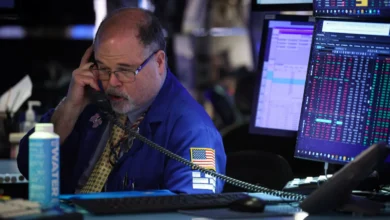As tariff sell-off deepens, here’s what to know before trying to ‘buy the dip,’ experts say
- As the tariff sell-off deepens, some investors may be eager to “buy the dip,” or purchase assets at temporarily lower prices.
- However, the strategy can be difficult since, of course, no one can predict future stock market moves, experts say.
As the stock market continues to fall, some investors are eager to “buy the dip,” or purchase assets at temporarily lower prices. Financial advisors, however, urge clients to stick with long-term investing plans amid the latest volatility.
U.S. stocks plunged on Thursday after President Donald Trump issued sweeping tariffs on more than 180 countries and territories. The sell-off continued Friday after China unveiled plans to impose a 34% retaliatory tariff on all goods imported from the U.S.
As of Friday afternoon, the Dow Jones Industrial Average was down more than 1,700 points following a 1,679.39 drop on Thursday. Meanwhile, the S&P 500 was off 4.8% after losing 4.84% the previous day. The tech-heavy Nasdaq Composite slid by 4.9% after plummeting 5.97% on Thursday.
Timing the market is ‘impossible’
When asset values fall, there’s often chatter in online communities like Reddit about whether to “buy the dip.” Typically, investors aim to buy at a discount and expect an eventual recovery, which could lead to future gains.
While buying cheaper investments isn’t a bad idea, the strategy can be tricky to execute since, of course, no one can predict stock market moves, experts say.
“We never recommend timing the market, mostly because it is impossible to do without simply getting lucky,” said certified financial planner Eric Roberge, CEO of Beyond Your Hammock in Boston.
Instead, you should “stick to a thoughtful, rules-based investment strategy designed to get you through to your long-term goals,” he said.
Keep a ‘disciplined approach’
When buying assets during a market downturn, you need a “disciplined approach,” according to CFP Jay Spector, co-chief executive officer of EverVest Financial in Scottsdale, Arizona.
For example, some investors linger in cash while waiting for rock-bottom prices. But no one can predict the bottom of the market, experts say.
Waiting on the sidelines can be costly because the best returns can follow the biggest dips, according to research from Bank of America.
Rather than trying to time the bottom, you should consider “dollar-cost averaging,” which systematically invests your money at set intervals, Spector said. The strategy can capture lower prices while reducing risk, he said.




